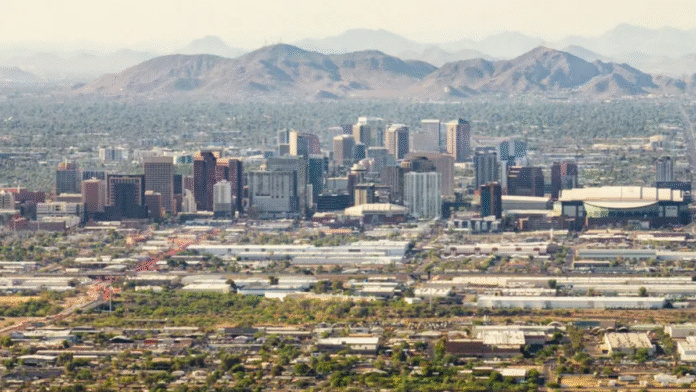Key Point Summary – Phoenix Heat Crisis
- Phoenix is experiencing record-breaking heat fueled by climate change
- The city may hit 117°F this week, tying its August all-time record
- Prolonged hot nights are raising risks of illness and power strain
- Arizona is seeing rising heat waves, water stress, and wildfire danger
- Scientists warn this could be a glimpse of America’s climate future
Phoenix Swelters Under Relentless Heat Wave
The Phoenix heat crisis is no longer a seasonal nuisance—it’s becoming a national warning. The Arizona capital, long known for its brutal summers, is now facing extreme heat unlike anything in its recorded history.
Temperatures are expected to reach 117°F this week, threatening to tie the all-time August record. This comes just one year after Phoenix endured 31 straight days over 110°F and 113 consecutive days above 100°F—both records.
Dr. Zachary Labe, a climate scientist with Climate Central, says the city is entering “uncharted territory.” These extreme stretches are no longer one-off events—they’re becoming the norm.
Nights No Longer Offer Relief
Part of what makes the Phoenix heat crisis so dangerous is the lack of overnight cooling. “What used to be rare is now becoming more common, and more dangerous,” Labe explained.
Hot nights prevent the human body from recovering, raising the risk of heatstroke and other illnesses—especially among older adults, children, outdoor workers, and those with chronic health issues.
Other Arizona cities like Tucson are already experiencing three times more extreme heat events compared to the 1970s. That trend shows no signs of slowing.
Rising Temperatures Threaten Everything from Power to Parks
As global temperatures continue to rise, scientists predict that the Southwest will see longer and more frequent heat waves. That will ripple across nearly every part of life.
Energy demands will surge, putting greater stress on already-struggling power grids. Roads and train tracks may buckle under the heat. Agricultural production could plummet. And tourism—one of the region’s biggest industries—may suffer as outdoor conditions grow too dangerous for visitors.
Lake Mead and other national parks have already seen closures this year due to excessive heat. One visitor died, and more than 30 others were rescued after falling ill in the desert.
Wildfire, Water, and Warnings of the Future
Extreme heat often triggers other climate disasters. Longer heat waves dry out soil, worsen droughts, and elevate wildfire risk. Water resources—from rivers to underground aquifers—are strained further. Entire ecosystems could shift, and some communities may become unlivable during peak summer months.
Phoenix is now the frontline of America’s climate struggle. What’s unfolding in the desert Southwest may soon mirror conditions in other parts of the U.S.
“We’re seeing what happens when climate extremes collide with growing cities and aging infrastructure,” Labe said. “The choices we make now will shape how livable these places are in the decades to come.”




